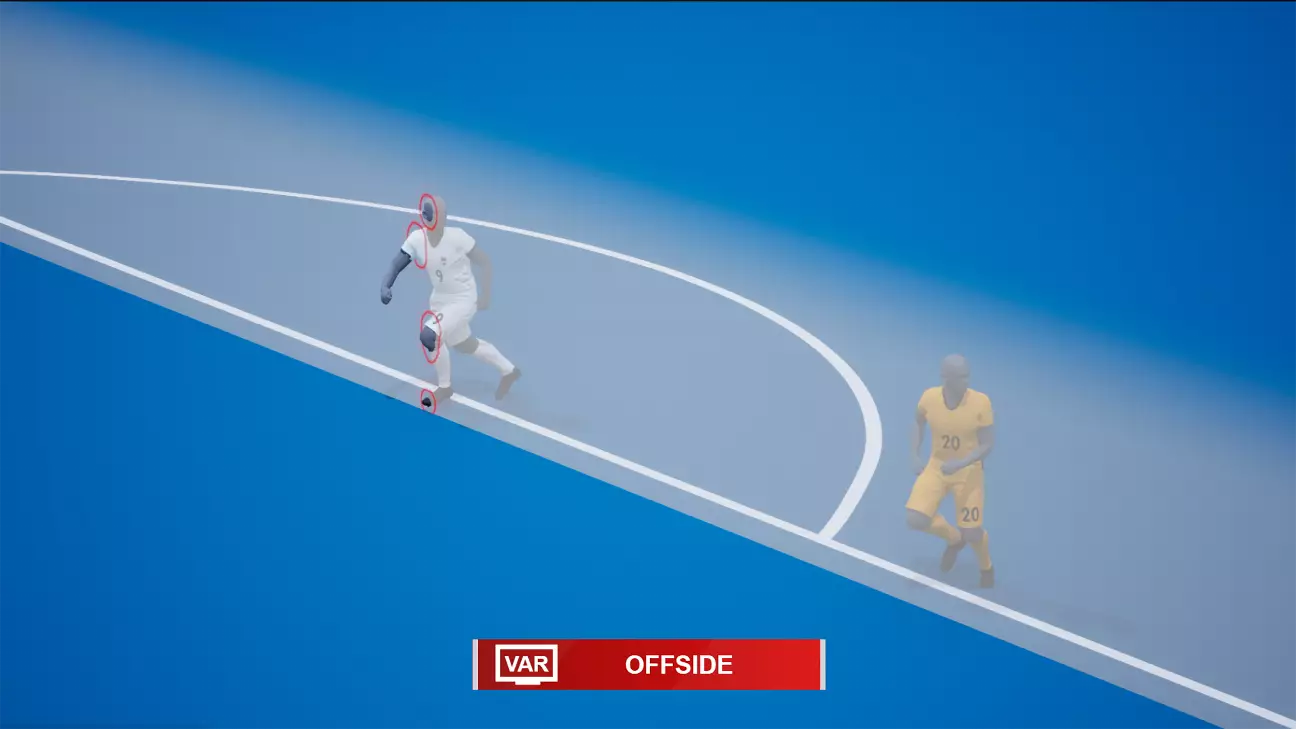Football is a sport that thrives on accuracy and precision, two elements increasingly challenged by human error, especially in officiating. In a bid to enhance decision-making, VAR (Video Assistant Referee) technology has been met with mixed responses from fans, players, and managerial staff alike. Despite its promise, the implementation of semi-automated VAR offside technology (SAOT) in the Premier League is now clouded with uncertainty, leaving stakeholders apprehensive about what lies ahead.
Originally slated for introduction following one of the autumn international breaks, the semi-automated VAR system was expected to streamline the decision-making process, reducing review times by an average of 31 seconds. However, an update from the Premier League’s shareholders’ meeting indicated that SAOT may not be ready for deployment until as late as 2025. This unexpected delay raises fundamental questions regarding the overall efficacy and reliability of the technology and whether this season is appropriate for its rollout.
SAOT has already seen implementation in leagues like Serie A and LaLiga. Serie A was the pioneer, adopting the technology in January 2023 after a controversial VAR incident caused significant backlash when a crucial Juventus goal was disallowed. LaLiga swiftly followed suit at the start of the current season, leaving the Premier League lagging behind, a point of concern for many English clubs and fans who see VAR’s shortcomings as especially glaring in their domestic league.
Semi-automated VAR boasts numerous advantages, most notably its potential to eliminate the subjective nature of human involvement in offside calls. With the technology employing advanced AI to position lines onto players automatically and provide a visual representation of offside decisions, consistency and accuracy could greatly improve. The graphical enhancements offered by SAOT present a clear improvement over the current manual methods of displaying decisions, promising to reduce confusion during broadcasts.
Despite these benefits, the Premier League remains hesitant. Extensive tests have indicated that the technology is not yet infallible. The reluctance to proceed with a rollout without comprehensive assurance of its reliability showcases the league’s commitment to upholding the integrity of the sport, even if it means enduring the current system’s shortcomings for a while longer.
The call for a transition to SAOT has gained momentum, particularly following several high-profile errors in the current VAR system. Take, for example, the recent scenario involving Leicester City, whose manager Steve Cooper voiced frustration about what he labelled as an “awful human error” after a critical match against Crystal Palace where a goal was ruled onside incorrectly. Cooper’s assertion underscores a growing sentiment among managers that mistakes made by the existing VAR system are consistently undermining the fairness of the competition.
The Premier League, however, defended its current methodology, implying that while errors do occur, they are within a manageable range. Regardless, cases like the recent disallowance of Luis Díaz’s goal due to communication breakdowns raise deeper concerns about the existing system’s deficiencies—an issue that SAOT might not resolve despite its technical advancements.
Given that various leagues have already adopted SAOT, the expectation for its arrival in the Premier League intensifies each week. However, the ongoing testing and hesitance from executive bodies reflect a cautious approach that prioritizes the quality of officiating over hurried implementation.
For football enthusiasts, the wait for the semi-automated system evokes feelings similar to remaining in limbo—aware that enhancements exist yet forced to endure a flawed system. The persistent goal of the Premier League should be to provide an enjoyable match-watching experience without hindrance from potential officiating controversies. Enthusiasts will continue to keenly observe developments in this area, particularly as the spotlight of scrutiny shines ever brighter upon officiating standards in the world’s most-watched league.
While the trajectory towards a semi-automated VAR system holds promise, the prevailing uncertainties necessitate caution. The challenge remains for the Premier League to strike a balance between innovation and reliability, ensuring that the beautiful game remains not only exciting but fair and just. The hope is that this ongoing saga will ultimately conclude with a solution that serves all stakeholders involved in the beautiful game.

